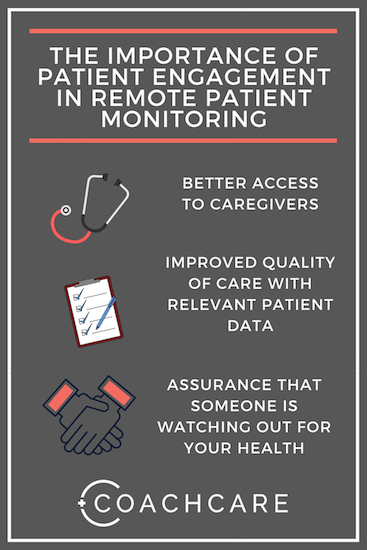The Importance of Patient Engagement in Remote Patient Monitoring
As digital health technology advances, telehealth is increasingly used to manage patients’ weight offline. Telemedicine is a promising intervention for patients because it allows for advanced and accurate monitoring of food intake and exercise, while also fostering improved medication adherence. However, for these benefits to materialize, patients must be engaged with the technology.

Remote patient monitoring (RPM) allows healthcare providers to monitor patients outside of the clinical setting. Particularly important for the management of chronic diseases, RPM is helping improve patient outcomes and reduce healthcare delivery costs. In 2019, RPM codes were finally added to the Medicare fee schedule which attach a definitive payment for general physiological remote monitoring of chronic conditions. This new, long-overdue reimbursement, and the fact that services from clinical staff — and not just physicians — can now be reimbursed means providers and health plans will undoubtedly launch new RPM programs in the coming year.
There are many benefits of remote patient monitoring for clinicians — ease of access to patient data, the ability to deliver higher-quality care to more patients with a lower risk of burnout — and for healthcare providers — lower costs and higher efficiency, to name just a couple. But what are the benefits of remote patient monitoring for patients?
RPM Benefits to Patients: Better Access
In a nation where a dramatic increase in the number of insureds has made it more difficult for some patients to access caregivers, remote patient monitoring increases the capacity for physicians to treat more patients.
RPM Benefits to Patients: Improved Quality
In addition to improving the quantity of care, RPM also has the ability to improve the quality of care. Since RPM connects clinicians more directly (and virtually instantly) with relevant patient data, it makes their daily routines more efficient and eases the possibility of burnout — resulting in obvious benefits to patient care.
RPM Benefits to Patients: Assurance
Important as patient comfort and engagement are, the benefits of remote patient monitoring go beyond that, offering patients invaluable assurance that someone is watching out for their health and well-being on a daily basis.
The Influence of Patient Engagement on Patient Outcomes
Patient participation in a telehealth program is a critical determinant of program success. A patient’s willingness to engage in a telehealth program is influenced by perceived usefulness of the technology and perceived ease of use. In addition, patient activation, which is defined as a patient’s understanding of his or her role in the care process, also contributes to participation.
Finding a sustainable outreach balance is key. Most patients will respond well to RPM reporting and surveys that take place a few times a week. A small number will benefit from more frequent interactions, and even a smaller minority will not communicate at all. As organizations implement and refine their RPM programs, they are likely to discover a balance that delivers both the needed data, stronger patient engagement, and positive behavior change to achieve the best possible care outcomes.
About CoachCare:
CoachCare powers clinics with a virtual health and remote patient monitoring platform that reflects your unique workflow and protocol. Remote patient monitoring insurance features drive significant additional revenue while lowering the overall cost of care. Contact us to learn more.